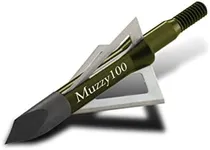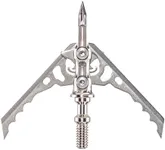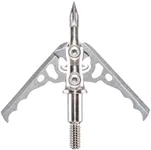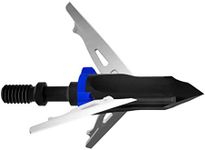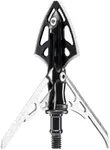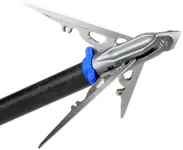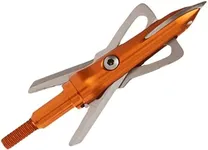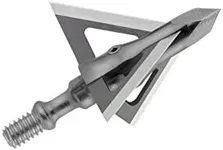Buying Guide for the Best Hunting Broadheads
Choosing the right hunting broadhead is crucial for a successful and ethical hunt. Broadheads are the tips of arrows used in hunting, and they come in various designs and specifications. The right broadhead can make a significant difference in your hunting experience, ensuring a quick and humane kill. When selecting a broadhead, consider factors such as the type of game you are hunting, your bow setup, and your personal preferences. Here are some key specifications to help you make an informed decision.TypeBroadheads come in three main types: fixed-blade, mechanical (expandable), and hybrid. Fixed-blade broadheads have blades that are permanently fixed in place, making them durable and reliable. They are ideal for big game hunting and can penetrate thick hides and bones. Mechanical broadheads have blades that expand upon impact, creating a larger wound channel. They are known for their accuracy and are suitable for medium to large game. Hybrid broadheads combine features of both fixed-blade and mechanical broadheads, offering a balance of durability and cutting diameter. Choose the type based on the game you are hunting and your preference for reliability versus cutting diameter.
Blade CountThe number of blades on a broadhead can affect its cutting efficiency and flight stability. Broadheads typically have 2, 3, or 4 blades. Two-blade broadheads offer deep penetration and are easier to tune for flight accuracy. Three-blade broadheads provide a good balance between penetration and cutting diameter, making them versatile for various game. Four-blade broadheads create a larger wound channel, increasing the chances of a quick kill, but may require more tuning for accurate flight. Consider the type of game and your bow's tuning when choosing the blade count.
Cutting DiameterThe cutting diameter refers to the width of the wound channel created by the broadhead. A larger cutting diameter can result in a quicker kill by causing more damage, but it may also reduce penetration. Smaller cutting diameters penetrate deeper but create smaller wound channels. For larger game, a broadhead with a larger cutting diameter (1.5 inches or more) is recommended. For smaller game, a cutting diameter of 1 to 1.5 inches is usually sufficient. Match the cutting diameter to the size of the game and your bow's power.
MaterialBroadheads are made from various materials, including stainless steel, carbon steel, and aluminum. Stainless steel broadheads are highly durable and resistant to corrosion, making them ideal for all-weather hunting. Carbon steel broadheads are extremely sharp and offer excellent penetration but may require more maintenance to prevent rust. Aluminum broadheads are lightweight and can provide good flight accuracy but may not be as durable as steel options. Choose the material based on your hunting conditions and the level of maintenance you are willing to perform.
WeightThe weight of a broadhead, measured in grains, affects the arrow's flight and penetration. Common weights range from 75 to 150 grains. Lighter broadheads (75-100 grains) are suitable for faster bows and can provide flatter trajectories, making them ideal for long-distance shots. Heavier broadheads (125-150 grains) offer better penetration and are suitable for larger game and slower bows. Match the broadhead weight to your bow's draw weight and the type of game you are hunting to ensure optimal performance.
